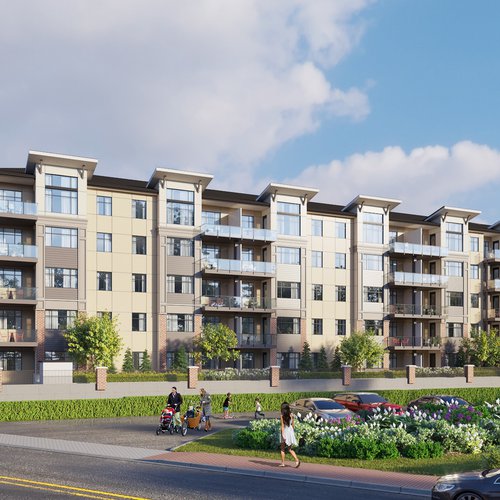March 19, 2024
tags : categories: Marketing , Real Estate , Exterior Rendering , House Rendering , Property Development , Architects
Putting architectural elements in your garden can be likened to crafting a work of art. This is because it incorporates the primary elements of design, namely mass, line, form, color, and texture. Understanding how these factors play and applying them appropriately in your garden would result in added beauty, function, and an improved atmosphere.
This article will discuss how architectural elements can be incorporated into your garden design. Read on!
Architectural elements of design
Understanding the guiding principles behind the primary design elements is important in cultivating an outdoor wellness space like a garden. Here’s an overview of them:
Mass
Mass refers to the space an object occupies, and the voids in your garden can be filled by—you guessed it right—architectural elements.
A pavilion or pergola can be a focal point in your garden design. Window boxes can also be a worthy consideration if you want to transform your outdoor living space. These structures don’t only boost aesthetics, but they can also bring calm and relaxation with the right choice of plants or flowers. If you want to conceal some unsightly views from plain sight, these boxes can be of help as well.
Line
Lines have this innate influence on your garden design as they guide eye movement in the space and pave the way for the flow of paths and beds. As an architectural element, lines are best applied in the direction of the pathway, boundaries, and distinction of plant beds.
As a rule of thumb, proper use of lines can convey feelings in your garden design. Straight lines imply directness while curved lines elicit gentleness.
Form
Objects’ shapes and sizes, as well as how they relate to one another, are what constitute form. Rectangles and squares convey orderliness, circles feel soft, triangles look sturdy, and irregular objects are liberating. Grouping plants together takes on a new form. And how they complement the existing structures could make or break your garden design.
Color
The element of color is one of the simplest ways to make a garden look vibrant. Warm colors like yellow and red can evoke excitement and make objects seem closer to you. Meanwhile, blue and green create a sense of calmness and make objects look farther away. Painting your fences and gates can uplift the atmosphere of your garden. Also, applying contrasting colors can highlight your architectural elements.
Texture
Texture describes the surface quality and other physical traits of an object. A coarse texture exhibited by a plant usually entails distinct appearance and prominent leaves. A fine-textured plant, on the other hand, displays small leaves, soft flowers, and a delicate appearance. Architectural elements in your garden design can also have smooth or rough surfaces, as well as dark or light tones. Wooden fences and stone walls should exhibit both for textural balance.
A garden that exhibits all the elements mentioned above would look dynamic, adding to your landscape's appeal.
Considerations in designing your garden

People have been investing in gardening for the past years, with the global market value of the gardening industry reaching over USD$100 billion in 2020. This trend reflects an increasing value for gardening’s benefits like a positive environmental footprint, improved mental well-being, and increased physical activity, among others.
As more people recognize the value of gardening, they seek ways to enhance their gardens by incorporating architectural elements. The following are some things you should take note of in this regard:
Know the purpose and style
Knowing your garden’s overview sets the tone for turning it into a functionally thriving space. Take into consideration the existing architectural elements in your home along with your personal preferences. Defining this will gear you towards a clear direction for your design.
Also, identify how your garden will be used for. Will it be a vegetable garden, an area for rest and recreation, or both? You can mix and match by discussing them with your family and professional garden designers. At the same time, you can search the Internet for ideas that you want.
Create a layout
A good garden layout plan organizes your space aesthetically and functionally. This significantly minimizes the time allotted for doing chores.
Identify the placement of the functions you want to have. Take note of the shade and sunlight that each space receives. This will play a role in choosing plants and what activities can be done in each. Walkways, fences, and patios, among others, also help organize spaces and facilitate transitions in the area.
Accessorize your garden
Adding accessories can create a sense of character and charm in your space. Statues, chimes, and fountains are some architectural elements that can create picturesque scenery. Also, choose furniture that matches the theme of your garden. It can be wooden, metal, or minimalist, depending on how it blends with your design.
With the home gardening and landscaping services raking in a whopping USD$99 billion of revenue each year in the U.S. alone, it’s safe to say there’s no lack of tools and help to make these details happen.
Conclusion
Designing your garden by incorporating architectural elements cultivates a space for relaxing and unwinding. You’ll be a step closer to your dream outdoor space by considering the ideas here in this article.










